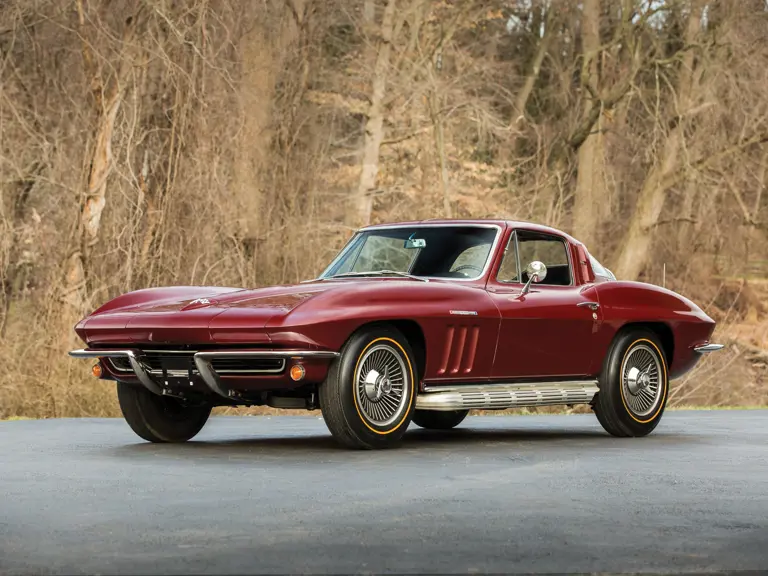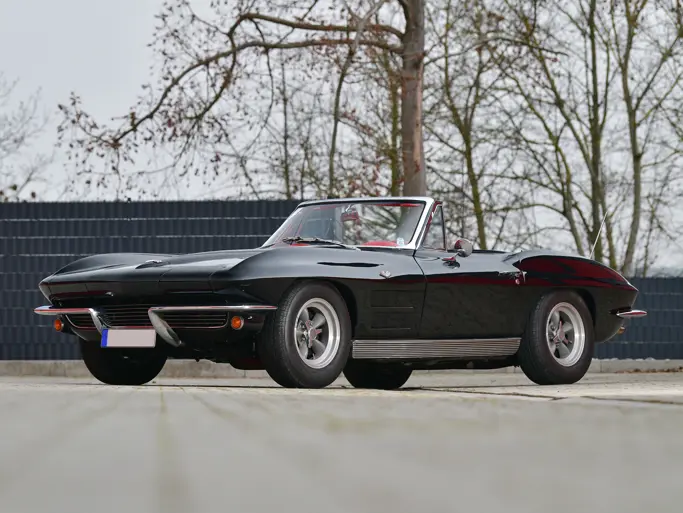
1965 Chevrolet Corvette Sting Ray 327/375 'Fuel-Injected' Coupe
{{lr.item.text}}
$66,000 USD | Sold
{{bidding.lot.reserveStatusFormatted}}
- 327-cid, 375-hp fuel-injected V-8 engine
- Four-speed manual transmission
- Restored
- AM/FM radio
- Four-wheel disc brakes
- 771 (coupe & convertible) 1965 fuelie Vettes built
Nineteen sixty-five marked the third year of the C2 Sting Ray body style, with 8,186 coupes and 15,376 convertibles produced. Of this number, a total of 771 (both Coupe and Convertible) left the factory with the optional fuel-injected V-8 engine that cost a hefty $538. Hood styling was revised, the roof vents were gone on coupes and the gills behind the front wheels were functional for the first time. Disc brakes at all four corners became standard while the Rochester Ramjet “fuelie” 327-cid, 375-hp V-8 would make its final appearance, thanks to both cost and the mid-year appearance of the more-powerful and lower cost 396-cid “big-block” V-8.
The new disc brakes were developed courtesy of Chevrolet engineers working in concert with Delco-Moraine who devised a completely new approach. The novel system let the pads barely touch the discs at all times. This provided instant pedal response and satisfactorily addressed an early criticism of discs: that when they got wet, they failed to work adequately. The braking system allowed for quick and reliable stopping power and was a most welcome addition to the Corvette platform.
Presented in Milano Maroon with a black interior, this Corvette is reported to have been restored at an unspecified point in time. The rare 327-cid, 375-hp fuel-injected V-8 engine is paired with a desirable four-speed manual transmission. The "fuelie" coupe is generously appointed with factory side exhausts, factory alloy wheels with knock-offs, Firestone yellowline tires and AM/FM radio. No power steering or brakes for this brute though.
In 1965, your Corvette could come in many forms; dull was not one of them, no matter how few accessories may have been on the car. With the “fuelie” you knew you had the only option you needed.


 | Fort Lauderdale, Florida
| Fort Lauderdale, Florida


